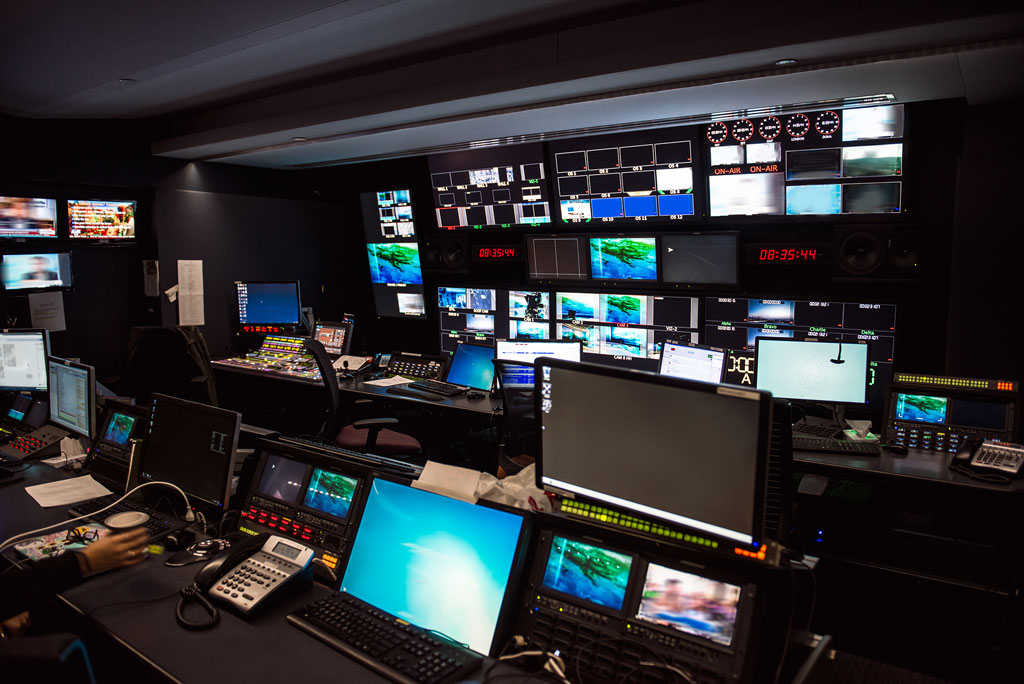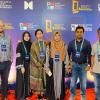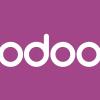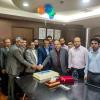Migrating a TV station to Free/Open-Source Software
A country should aim to be an innovator of tech, not just a customer
Previously, most TV channels in Bangladesh and around the world had to purchase expensive software solutions called News Room Control Systems (NRCS) to produce and run their news. These systems have to be bought from proprietary foreign vendors, and require steep annual maintenance fees; however, Deepto TV has been able to replace its expensive foreign-supplied NRCS software with free/open-source alternatives, saving foreign currency and allowing the TV industry to be more technologically independent.
TV news production involves several tasks which need synchronization. First, reporters and cameramen have to go out every day to gather news stories. News cameras record video footage which has to be saved on to the hard drive of a computer for editing down to a usable length using video editing software.
At the same time, the reporter has to write up news text to accompany the video, which will be displayed on a teleprompter and read aloud by a news reader. A news editor has to modify or approve the news text, decide the sequence of the news stories, and schedule the news text and videos to air at the same time.
NRCS software is normally used to synchronize news videos and news story text; during a live news broadcast, the news text has to appear in front of the newsreader teleprompter at the same time that the associated video is played. While it sounds complex, Deepto has been able to get all the above functionality by customizing free/open-source software.
Deepto TV (and its parent company, Kazi Farms Group) is already a user of free software like Ubuntu Linux (www.ubuntu.com/desktop) and LibreOffice (www.libreoffice.org) instead of proprietary alternatives. In addition, Deepto TV has used the free/open-source CasparCG (www.casparcg.com) playout server developed by Swedish state TV to play out all programs and ads for the last two years.
Journalists edit their news footage using KDEnlive free video editor (www.kdenlive.org), and save videos in the media folder of CasparCG playout server, which can play them out during news broadcast. CasparCG playout server can also add various graphics to news videos (Deepto used CasparCG for all 2018 Bangladesh election news graphics).
However, CasparCG is not set up by default to manage news text, which has to be read by the newsreader alongside the news videos. But the free/open-source CasparCG Clip Tool extension to CasparCG can schedule and queue video clips (https://github.com/olzzon/). This enabled Deepto to utilize CasparCG to control news video playout as well as programs.
Fortunately, the writing of news text by a journalist and editing of the text by a news editor can be accomplished by Newscoop (https://www.sourcefabric.org/), a free/open-source software designed primarily as a content management system (CMS) for news websites. Since Deepto TV already uses Newscoop to run its news website, it made sense to also use Newscoop to create and edit news story text. Once the news text is uploaded into Newscoop, the news video clip in the CasparCG media folder can be linked with the Newscoop text, which ensures that these two can be synchronized.
Once Newscoop news text is linked to news videos in the CasparCG playout server, an editor has to order the news stories of the day for playout (this sequence is called the run-down). In Newscoop, the run-down takes the form of a web page containing a list of news stories with associated video clips, which can be dragged and dropped in to the appropriate order.
Once the run-down order is finalized, the news text is sent to the news reader teleprompter in the correct order in the form of a web-page which can be scrolled down and read by the news-reader. Likewise, the CasparCG news playout operator can see the rundown and play out the appropriate news videos at the right times.
In this way, the combination of free software like KDEnlive video editor, CasparCG playout server, and Newscoop CMS fulfill all the required functions of an expensive/proprietary NRCS for Deepto. However, as the new system is entirely composed of free components, there is no purchase cost or annual maintenance fee. This has allowed Deepto to run its TV news entirely on free/open-source software.
It is hoped that other companies in Bangladesh will adopt free/open-source software to enable the country to achieve technological independence from foreign vendors. Ultimately, a country should aim to be an innovator of technology rather than just a customer. Open-source software offers a means to accomplish this.
Zeeshan Hasan is a director of Kazi Media, the company behind Deepto TV. He is also the managing director of Sysnova.




